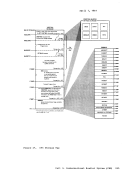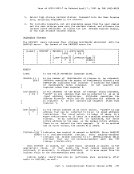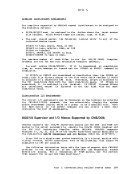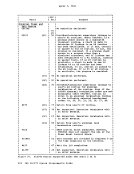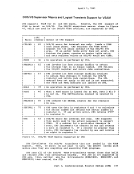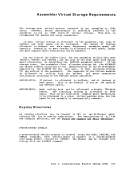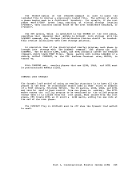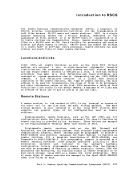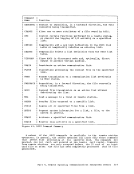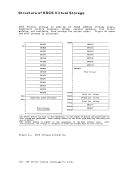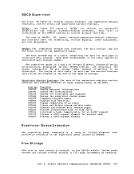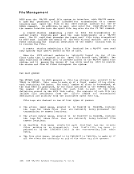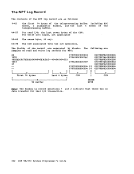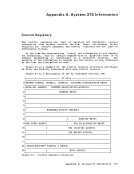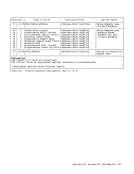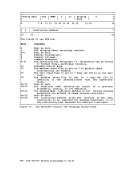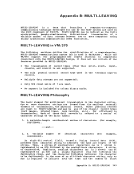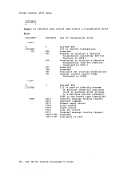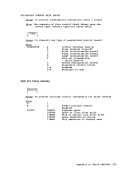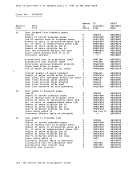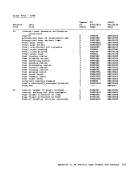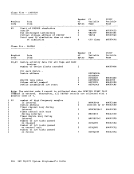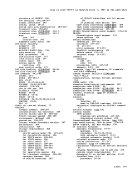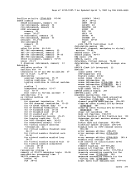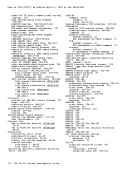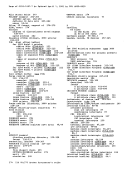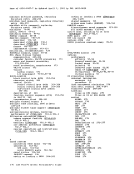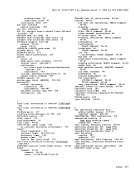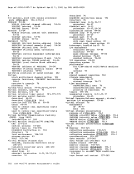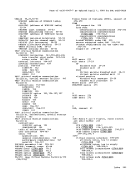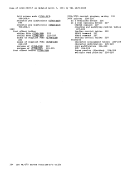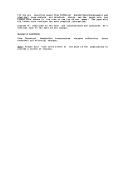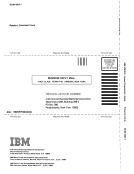Paqe of GC20-1807-7 As Updated April 1, 1981 by TNL GN2S-0829 r------ , Messaqe I I DMKMCH612W MACHINE CHECK; TIMING I FACILITIES DAMAGE; RUN SEREP I , I DMKMcr620I MACHINE CHECK; ATTACHED I PROCESSOR NOT BEING USED DMKCCH603W CHANNEL ERROR, RUN SEREP,
RESTARTSYSTEM DMKCPI955W INSUFFICIENT STORAGE FOR VM/370 DMKMCH622W MACHINE CHECK; MULTIPLE CHANNEL ERRORS DMSABN148T SYSTEM ABEND xxx
CALLEDFROM xxxxxx Others Refer to OS and DOS publications
for the abnormal termination
messages.
Type of AbendI --------I An error has occurred in the I timing facilities. Probable I hard error. I A malfunction alert, clock
clock error or instruction
processing error occurred on
the attached processor.
The system continues to run
in uniprocessor mode.
CP termination without auto
matic restart.
There was a channel check
condition from which the
channel check handler could
not recover. CP enters the
wait state with code002 in I the Psw. IThe generated system requires I more real storage than is I available. CP enters the I disabled wait state with I code OOD in the PSW. IThere was a group error I machine check from which the I machine check handler could I not recover. CP enters a I wait state with code 001 in 1 in the PSW. I I ,eMS abend, system will acceptl
commands from the terminal.I Enter the DEBUG command and I then the DUMP subcommand to 1
haveCMS dump storage on thel printer. I I IWhen OS or DOS abnormally I I terminates on a virtual I t machine, the messages issuedl I and the dumps taken are the 1 I same as they would be if OS I I or DOS abnormally terminatedl I on a real machine. I L ______________________________________________________-J
Fiqure 1. Abend Messages (Part 3 of 3)
Another obvious indication of a problem is unexpected output. If your
output is missinq, incorrect, or in a different format than expected,
some problem exists.Unproductive processing
problem is not as easily
environment.
time is another symptom of a
recognized, especially in a
6IBM VM/370 System proqrammer's Guide
problem. This
time-sharing
RESTART
CALLED
for the abnormal termination
messages.
Type of Abend
clock error or instruction
processing error occurred on
the attached processor.
The system continues to run
in uniprocessor mode.
CP termination without auto
matic restart.
There was a channel check
condition from which the
channel check handler could
not recover. CP enters the
wait state with code
commands from the terminal.
have
Fiqure 1. Abend Messages (Part 3 of 3)
Another obvious indication of a problem is unexpected output. If your
output is missinq, incorrect, or in a different format than expected,
some problem exists.
problem is not as easily
environment.
time is another symptom of a
recognized, especially in a
6
problem. This
time-sharing

























































































































































































































































































